Top 5 ‘capitalist’ dances that lit up Soviet dance floors
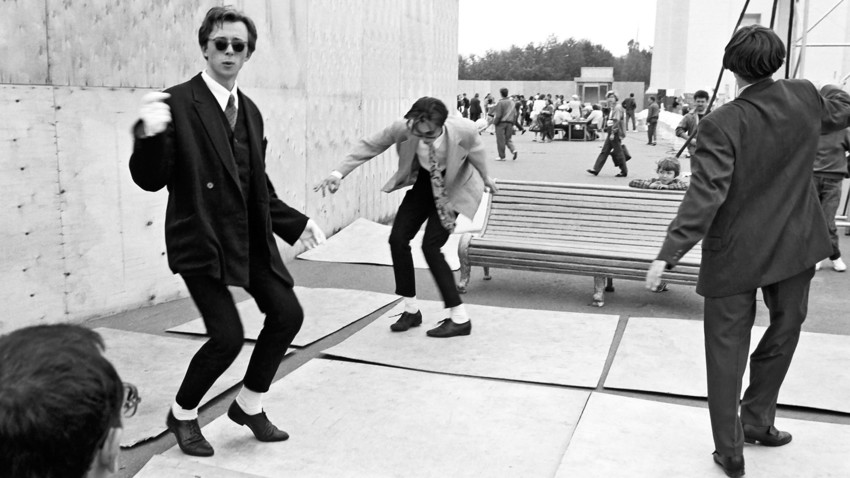
The 1917 Russian Revolution, which led to the rise of the Soviet Union, affected people’s lives in many different ways. To start with, the Soviet government declared itself the arbiter of all universal morality. In 1922, the All-Russian Conference of the Komsomol (a youth organization controlled by the Communist Party) concluded that social dances that emerged in capitalist, bourgeois societies were dangerous for Soviet youth.
According to Soviet ideologists, foreign cultures and customs were awash with the explicitness of sex. The Argentine tango and the American foxtrot certainly fit that description. But it never stopped Soviet people from dancing those styles.
1. Foxtrot
Named after its creator, U.S. performer Harry Fox, the foxtrot made its world premiere in 1914 in New York and rocked the dancing world. In Europe, the dance characterized by flowing and languid movements became hugely popular after World War I.

The American ballroom dance arrived in the USSR in the 1920s and was danced with beautiful simplicity. However, it arrived at the wrong time, when the Soviet Union’s New Economic Policy (NEP) was in full swing. The foxtrot took Moscow by storm, becoming the essential epitome of freedom and individualism.
The dance craze enraged the authorities to the point where a caricature was published in one of the Soviet newspapers, according to which the foxtrot could lead to the “elimination of Bolshevism”. But it was already too little too late to worry about that. The popular dance was everywhere! It was even part of theatrical performances by trailblazing drama directors Vsevolod Meyerhold and Nikolai Foregger.
READ MORE: Vsevolod Meyerhold: The revolutionary communist director executed by Stalin
Cafes and salons were packed with foxtrotters. Russian novelist Nina Berberova recalled that Petrograd (now St. Petersburg) was abuzz, with everyone dancing. Leading poet of Russian symbolism Andrei Bely danced the foxtrot while listening to the gramophone in Berlin. According to one of the most towering poets of the 20th century, Marina Tsvetaeva, he danced like a satyr.
Meanwhile, Moscow’s busiest dance club found itself in Osip and Lilya Brik’s apartment, a powerhouse for revolutionary modernist art. Back in 1923, the guests danced to live music performed by a solo pianist.
All good things come to an end, however. The foxtrot found itself in hot water after withering criticism in the media. In an article, headlined ‘A New Kind of Pornography’ and published in popular Soviet magazine, the author described the foxtrot as “the yellow plague of the European bourgeoisie”, arguing that it was related to “sexual pathology” and “animal manifestations”.
The news agenda was filled with hot debates on the foxtrot. One magazine cited an interview with a peasant who visited Petrograd for the first time and came across a pair of youths dancing the foxtrot. “After such a dance, the girl would need to get married to her partner immediately,” the man said.
After pressure from activists, the so-called eccentric dances (including the tango, the quickstep, the foxtrot and the shimmy) were forbidden in public places in Moscow. In 1924, the dance was deemed as highly indecent. However, the foxtrot was back in favor again in the 1930s.
2. Tango
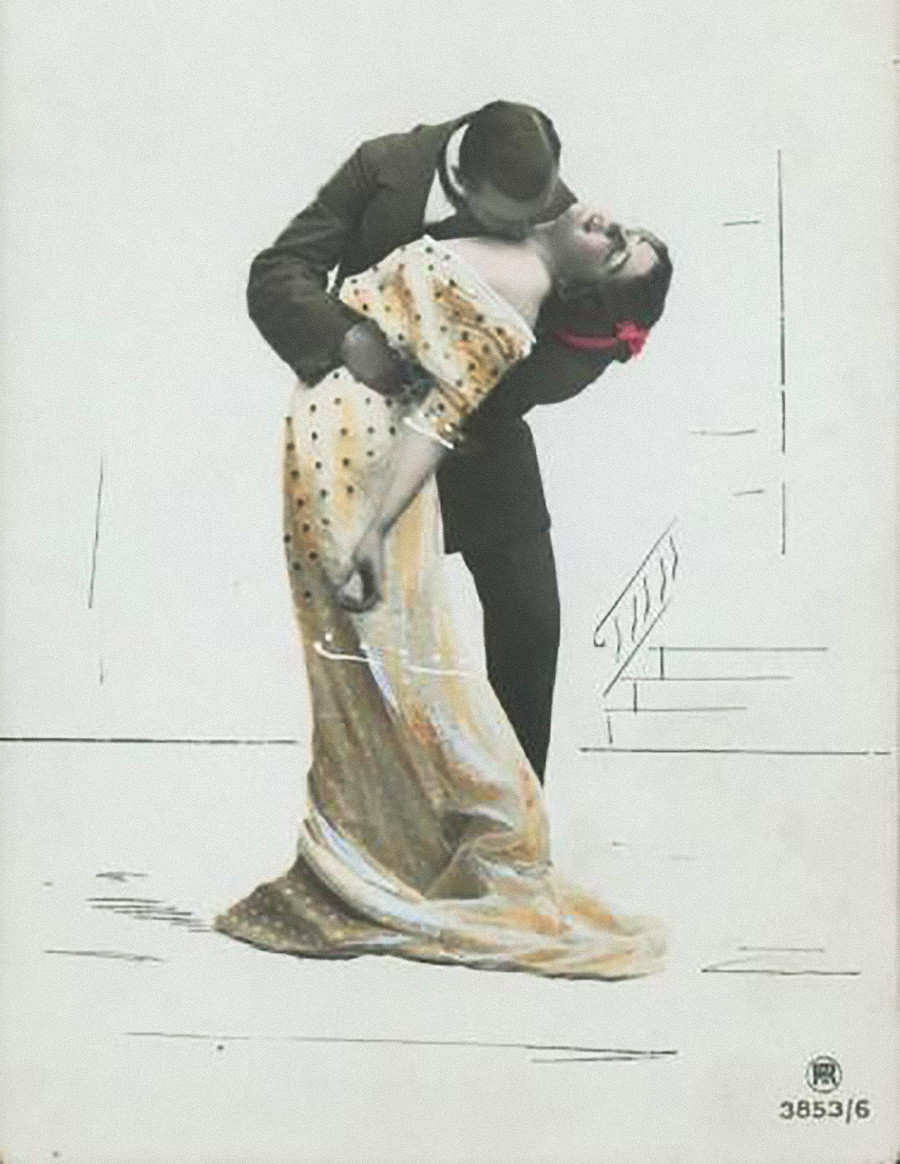
The tango came a long way from the slums of Buenos Aires to the posh Parisian salons. By the mid-1910s, it was the latest craze in fashionable circles of Berlin, London and New York. According to H. G. Wells, the man behind ‘The Time Machine’, 1913 was “the year of the tango”.” European ministers, heads of state, as well as Pope Pius X, condemned the tango, declaring the dance, where couples pressed against one another in a seductive embrace, as immoral.
The new passionate dance was also banned in Russia, where passions traditionally ran high. The sensual movements and rhythms of the Argentine tango came under fire for the utterly erotic nature of the dance. In 1914, as World War I broke out, the Ministry of Public Education issued a special decree, banning any mention of a “highly popular dance known as the tango” in educational institutions across Russia.
Alas, things didn’t get better in the 1920s and 1930s. The fierce Argentine dance style continued to be banned, branded as a dance reminiscent of a “decadent bourgeois culture”. But where there is a will, there is a way. And Soviet youths would teach themselves the tango and would organize secret tango gatherings in each other’s tiny apartments.
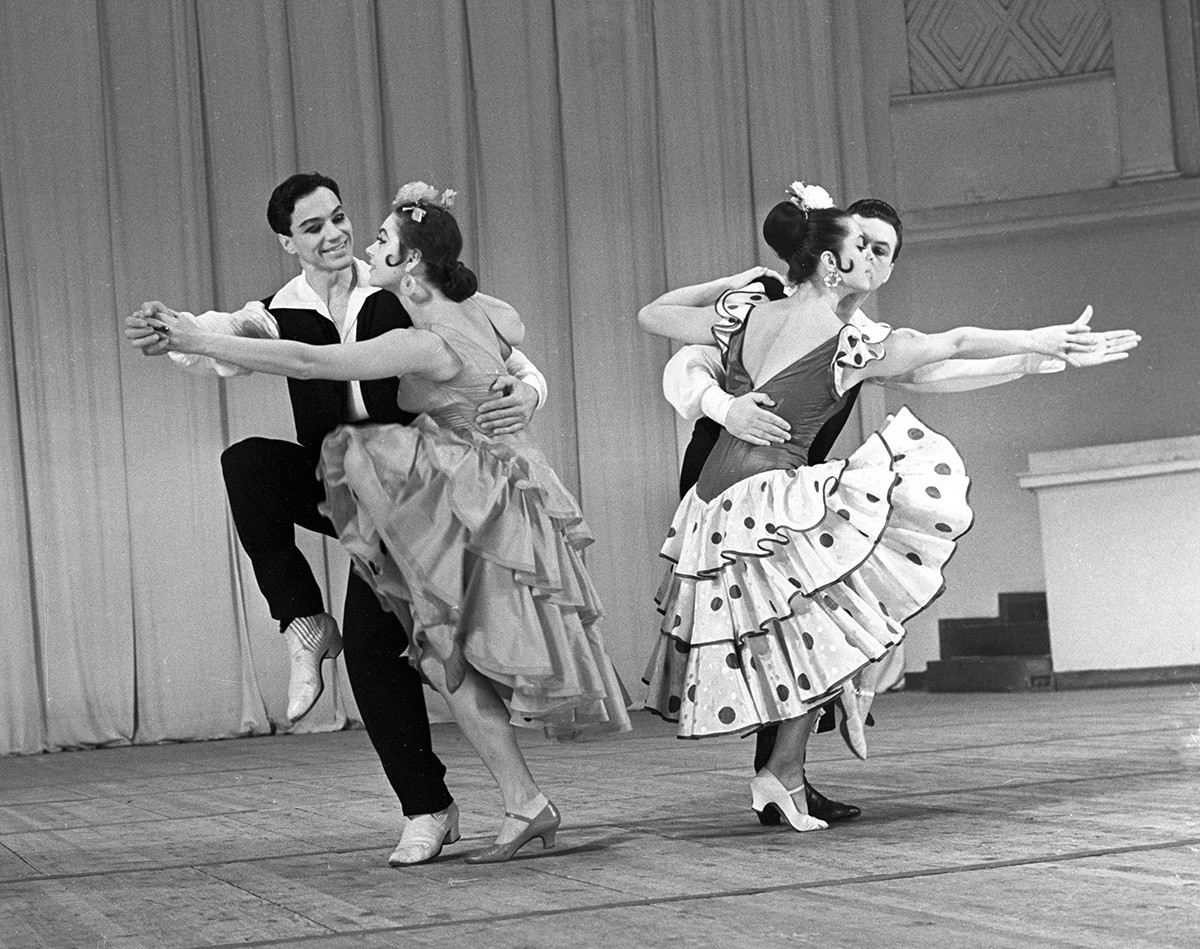
State Academic Folk Dance Ensemble of the USSR.
Aleksandr Nevezhin/Sputnik3. Maxixe
According to opinion polls in 1929, more than 70 percent of young Soviet men and women loved to dance. Around half of them frequented dance clubs, one third lit up local dance floors, while the rest took dance lessons to “keep up with the Joneses”. Dance-loving individuals risked being excluded from the Komsomol, or could even face arrests if officially proclaimed “enemies of people”.
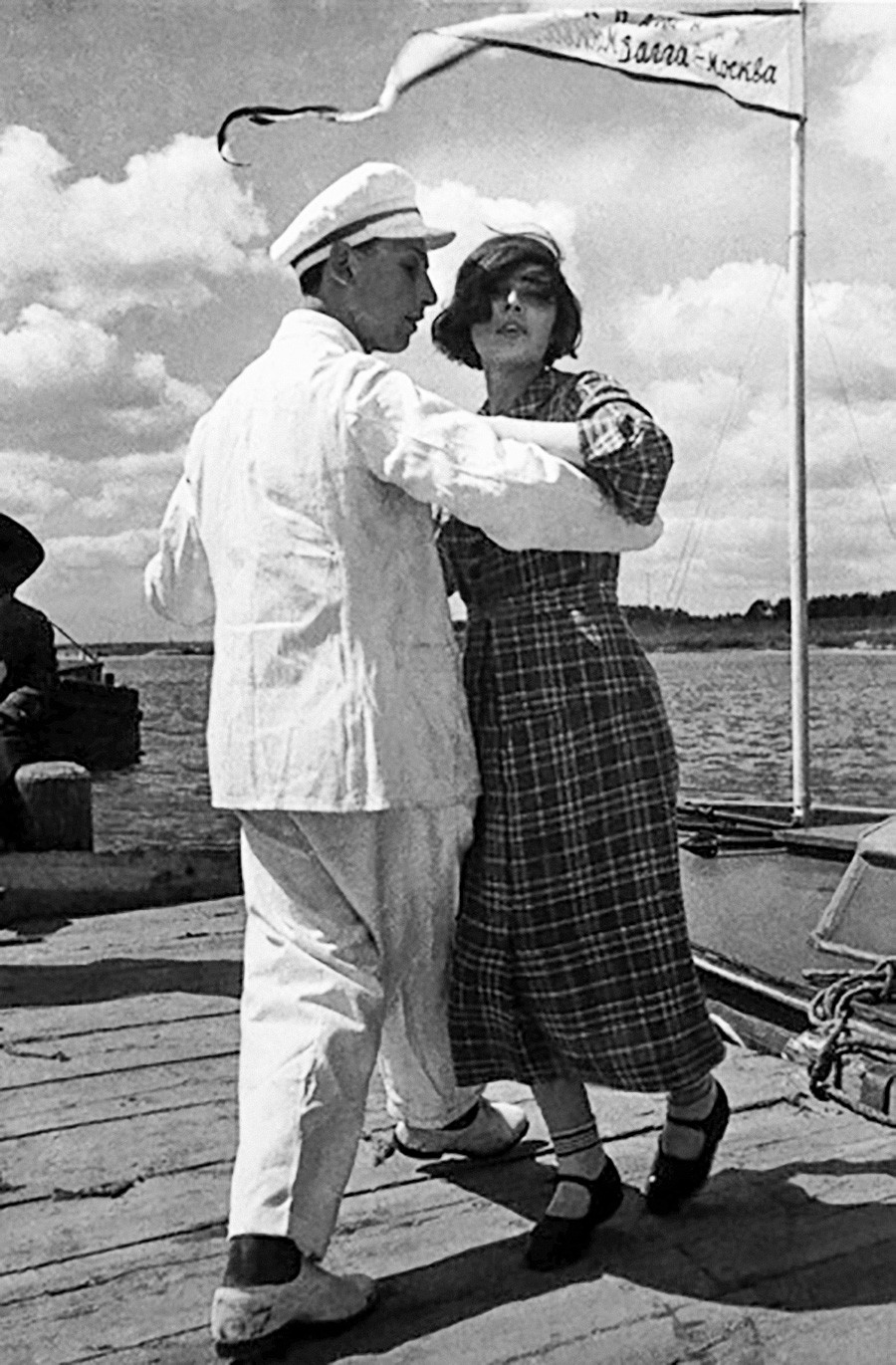
Dancing cheek to cheek on the Moskva-Volga Canal.
Sergei Strunnikov/Russian State Library+ https://russiainphoto.ruOne more “capitalist” dance erasing the distance between the man and the woman was a Brazilian form of tango, known as the maxixe. It basically blended polka, tango and habanera. Vladimir Mayakovsky (the author of ‘A Cloud in Trousers’ and Lily Brik’s adamant lover) described the energetic dance in one of his famous poems.
READ MORE: A look back at the life of Vladimir Mayakovsky
4. Rock-n-roll
Bill Haley’s legendary single ‘Rock Around the Clock’ made its debut in the US in April 1954 and became a number one hit the following year. Teenagers absolutely adored the rebellious nature that the music, often performed by African-Americans, was accused of provoking. The king of rock-n-roll Elvis Presley helped catapult the genre into top spot. Its popularity quickly spread past America’s borders, gaining momentum in Europe.
In the USSR, rock-n-roll was in short supply. In the 1950s, unorthodox music was even recorded on medical X-rays, secretly passed from hand to hand among rock-n-roll aficionados.
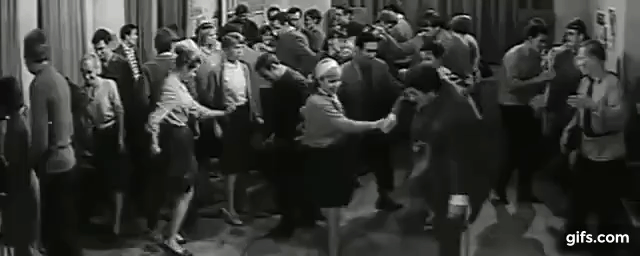
READ MORE: Boogie bones: Underground Soviet X-ray LPs come to UK
Rock-n-roll became more or less officially recognized only after the 1957 World Festival of Youth and Students, which drew guests from across the world. Some 34 thousand restless participants from more than 130 countries came to Moscow to give concerts, watch movies, take part in sports competitions and, finally, make new, Soviet friends.
The festival, among other things, put the spotlight on rock-n-roll. No one could resist it, including Russian folk dance ensemble of Igor Moiseyev, which proved that rock-n-roll is music anyone can dance to!
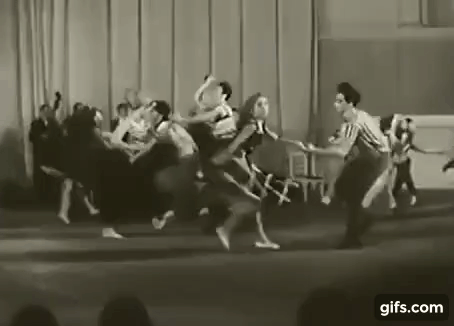
The true spirit of rock-n-roll gave rise to new fashion trends, with poodle skirts for women and greased hairstyles for men.
Russian filmmaker Valery Todorovsky recreated the atmosphere of the mid-1950s in his musical drama about Soviet rock-n-roll fans, ‘The Hipsters’.
5. Twist
The dance, which formally required that partners didn’t touch each other, came under the spotlight in 1960, right after US musician Chubby Checker released his hit song, ‘The Twist’. Everybody loved it, including the first lady, Jackie Kennedy.
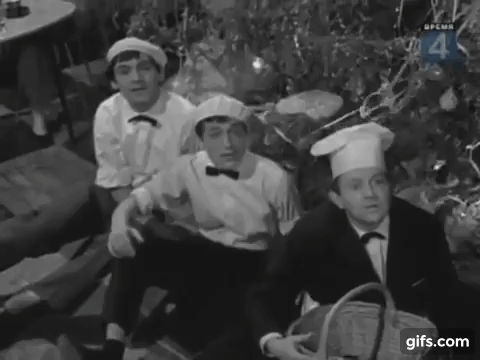
Things were different behind the Iron Curtain, where the twist was banned for quite a while. Nikita Khrushchev especially disliked the dance. The Thaw that set in under Khrushchev revamped the overall cultural environment, but certain things were just beyond him. The twist was considered harmful and, as always, completely “alien to Soviet ideology”. Dancing the twist in the USSR was regarded as some sort of national betrayal. In 1962, Khrushchev held a special meeting with culture ministry officials. During the talk, he made mincemeat of the twist, comparing twist devotees with sectarians.
READ MORE: Everything you need to know about Russian folk dances
“Take the Uzbeks, the Kazakhs, or any [Soviet] peoples - their folk style of dance is smooth and beautiful. And this… Listen, it’s simply indecent! To make such movements with those parts of the body! It’s not decent at all!... I think, comrades, let’s continue to stand up for the good old days. In order not to succumb to this decadence,” Khrushchev said.
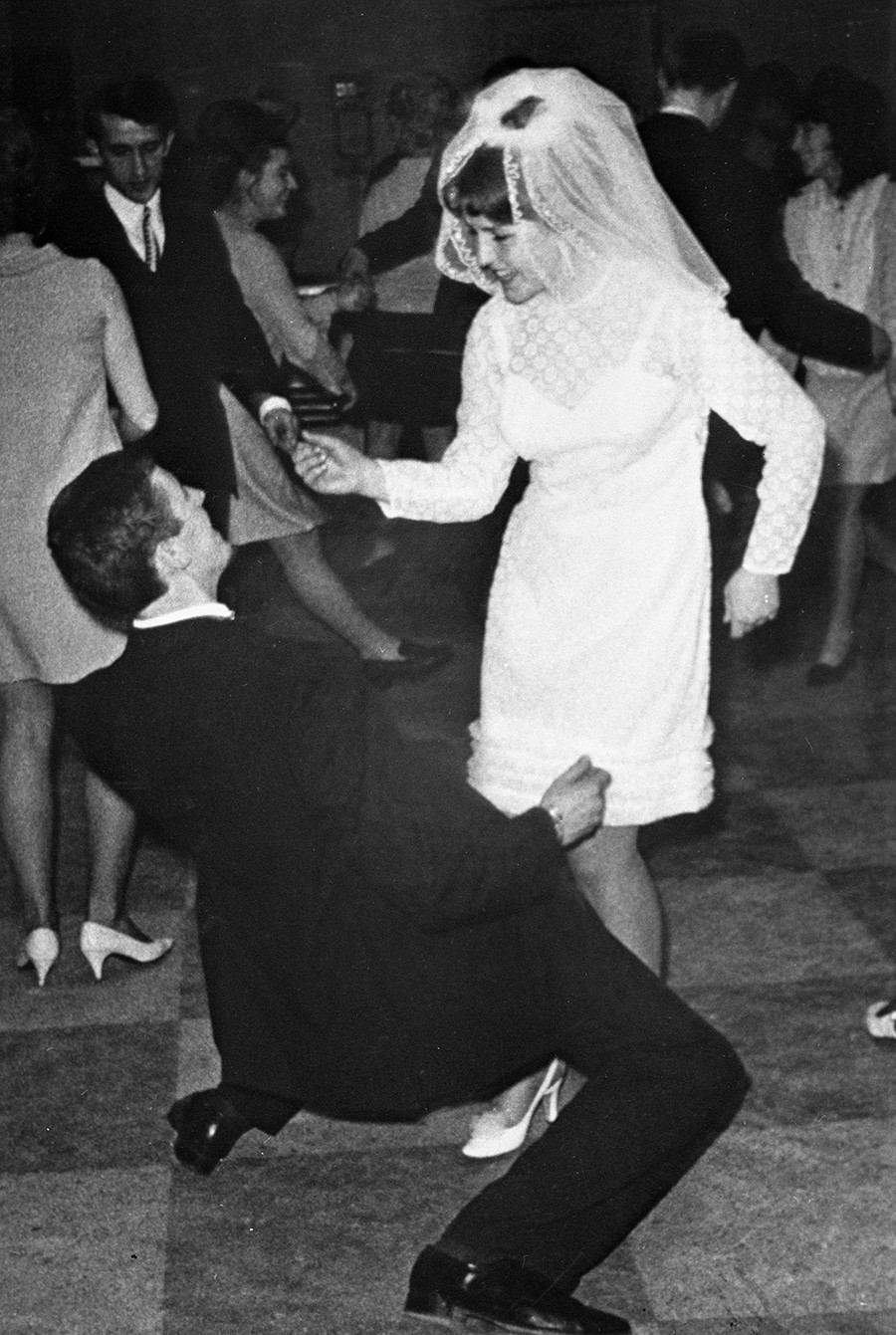
Photo reproduction of V. Bredikhin's image 'The Twist'.
Aleksey Sverdlov/SputnikHowever, the twist extravaganza couldn’t be stopped at the drop of a hat (even if it belonged to the powerful Soviet leader). The twist connoisseurs came together at secret parties, as well as on “legal” dance floors, where they danced the wicked twist to Soviet composer Yuri Saulsky’s hit song ‘Black Cat’.
In 1964, after Khrushchev was removed from power, the twist made up for lost time and reconquered Soviet dance floors once again.
If using any of Russia Beyond's content, partly or in full, always provide an active hyperlink to the original material.
Subscribe
to our newsletter!
Get the week's best stories straight to your inbox